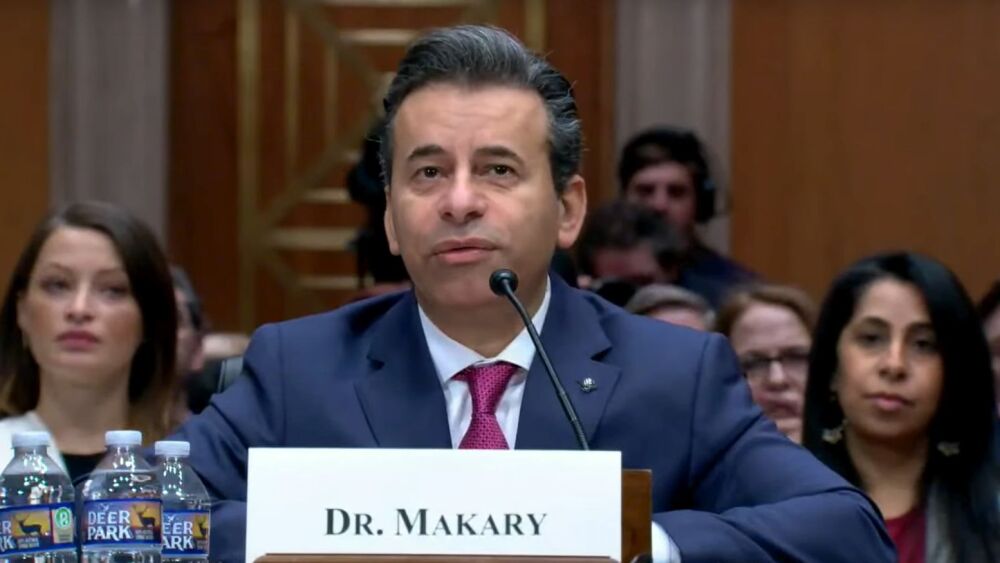January 17, 2017
(Last Updated: January 18, 2017 @ 12:15pm PT)
By Alex Keown, BioSpace.com Breaking News Staff
SAN FRANCISCO -- Gabriel Baertschi, the chief executive officer of Germany-based Grünenthal, a family-owned pharmaceutical company, is looking to be the go-to company for pain treatments, particularly in areas of high unmet need. Grunenthal’s lead product is neridronic acid, an investigational aminobisphosphonate currently in Phase III development for treatment of complex regional pain syndrome (CRPS), formerly known as Reflex Sympathetic Dystrophy.
In December, the U.S. Food and Drug Administration granted Breakthrough Therapy Designation to neridronic acid for treatment of CRPS, a debilitating condition characterized by severe, continuous, burning or throbbing pain often occurring in an extremity after injury or surgery. Neridronic acid was discovered and developed by Italy-based Abiogen Pharma. Neridronic acid is the first investigational medicine to receive Breakthrough Therapy Designation for the treatment of CRPS, according to company information.
Baertschi said people afflicted with CRPS have no approved treatments available in the U.S. or Europe.
“It’s a painful disease. It’s more painful than having an amputation or giving birth,” Baertschi said during an interview with BioSpace during the J.P. Morgan Healthcare Conference in San Francisco. “The people who have this, they cannot take their grandchildren in their arms or they have pain when touching a glass of water.”
Baertschi said there is still a lot about CRPS that is not understood.
“It’s a badly understood disease. We don’t know why patients get this. That patient group has a high suicide rate. It’s isolating you from any social activity, it’s a big burden,” he said.
In November, Grunenthal acquired Pittsburgh-based Thar Pharmaceuticals, which provided it with Phase III-ready T121, an oral zoledronic acid drug product, for use in CRPS.
Baertschi was tapped to helm Grunenthal in October. Before taking over the top spot, he served as country president for AstraZeneca ’s operations in Japan. One of his first actions as CEO was to come to the J.P. Morgan Healthcare Conference and talk about the research the company is conducting in pain treatments.
Since taking over the reins of Grunenthal, Baertschi said work has been progressing well and predicts that 2017 will be a good year for the company. The company has lofty goals, including the commercialization of four products and becoming a $2 billion company by 2022. In 2015, the company had revenue of about $1.4 billion. This year though, Baertschi said he anticipates some data readouts for its CRPS treatment. Baertschi said they hope to see the CRPS treatment commercially available in the United States within three to five years.
There are currently about 200,000 people in the U.S. afflicted with CRPS.
In addition to developing a treatment for CRPS, Grunenthal is active in about 30 different pain segments. The company is developing treatments for pain associated with Parkinson’s disease and arthritis. Grunenthal also has a therapy for treatment of bladder pain syndrome.
While chronic pain medications have had a history of being abused, particularly some that are opioid based, Baertschi said Grunenthal is taking steps to prevent that with a unique polymer coating. Baertschi said the coating is a design that cannot be crushed, even after being subjected to repeated blows with a hammer. He said many of the drugs that are abused have been ground into a powder, so it was important to come up with something that could prevent crushing. In fact, during the patent tests, Baertschi said they used a hammer on the pills to demonstrate the toughness.
“The pills withstood the blows, but the table they were sitting on was broken,” Baertschi said.
While at the J.P. Morgan Healthcare Conference, Baertschi said he and members of his leadership team were networking with potential partners for future pain collaborations.
“We’re an entrepreneurial company. We’re active about building partnerships and bridges. We want to be in areas that have high unmet medical needs,” Baertschi said.
In addition to developing treatments for pain, Baertschi said the company is looking to build beyond pain treatments and enter into other related areas, such as developing therapies for inflammation and rheumatoid arthritis.
“This is going to be a good year. There’s a lot ahead of us,” Baertschi said.





